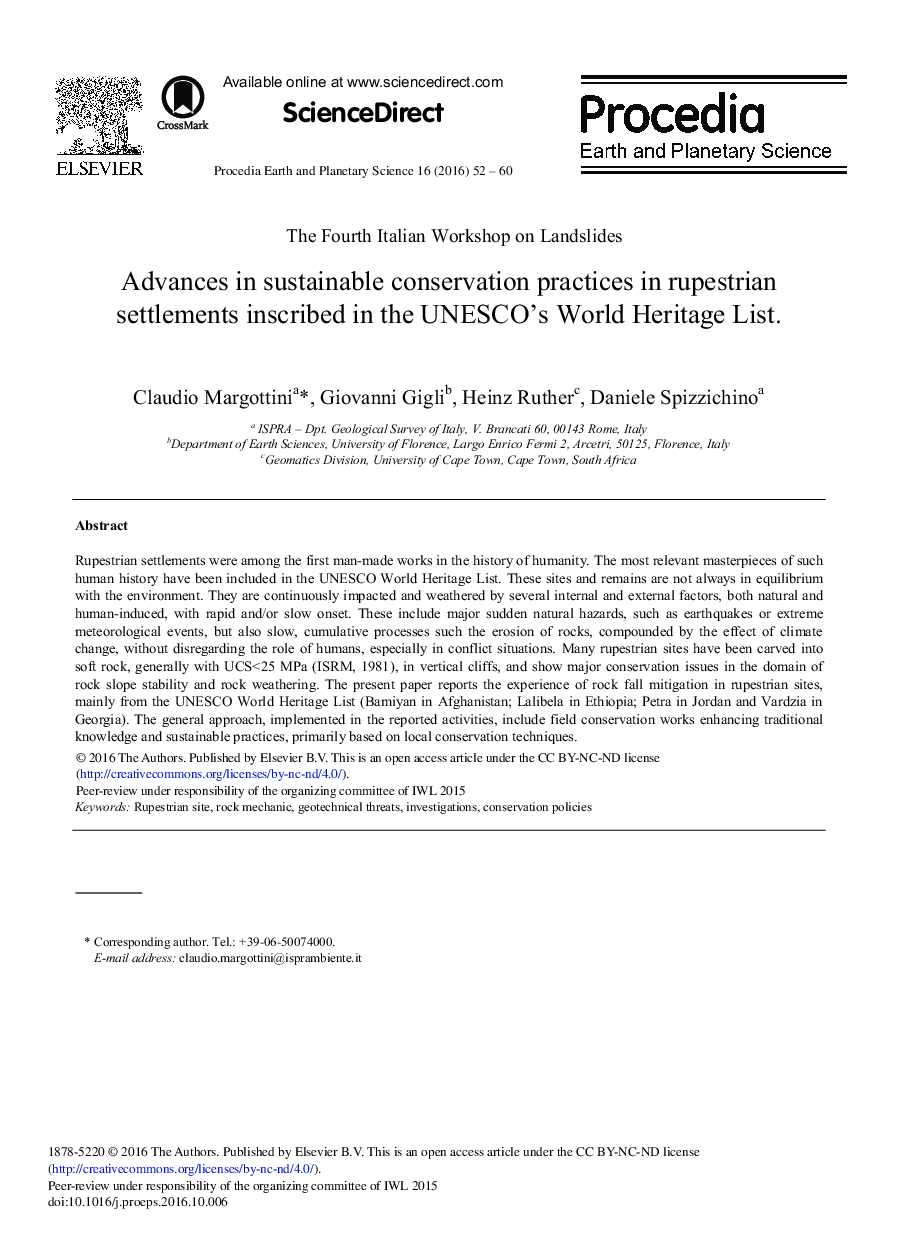| Article ID | Journal | Published Year | Pages | File Type |
|---|---|---|---|---|
| 4674634 | Procedia Earth and Planetary Science | 2016 | 9 Pages |
Rupestrian settlements were among the first man-made works in the history of humanity. The most relevant masterpieces of such human history have been included in the UNESCO World Heritage List. These sites and remains are not always in equilibrium with the environment. They are continuously impacted and weathered by several internal and external factors, both natural and human-induced, with rapid and/or slow onset. These include major sudden natural hazards, such as earthquakes or extreme meteorological events, but also slow, cumulative processes such the erosion of rocks, compounded by the effect of climate change, without disregarding the role of humans, especially in conflict situations. Many rupestrian sites have been carved into soft rock, generally with UCS<25 MPa (ISRM, 1981), in vertical cliffs, and show major conservation issues in the domain of rock slope stability and rock weathering. The present paper reports the experience of rock fall mitigation in rupestrian sites, mainly from the UNESCO World Heritage List (Bamiyan in Afghanistan; Lalibela in Ethiopia; Petra in Jordan and Vardzia in Georgia). The general approach, implemented in the reported activities, include field conservation works enhancing traditional knowledge and sustainable practices, primarily based on local conservation techniques.
